Reforestation
Reforestation
Reforestation is the intentional or natural restocking of forest cover that has been depleted. This could result from wildfire, flooding, insects, disease, or clear-cutting. Reforestation restores the natural environment for wildlife, native plant species, and our vital watersheds. Planting seedlings or growing new trees from seed also helps prevent soil erosion, reduces carbon dioxide, and provides a natural water filtering system.
New Mexico wildfire burn severity web mapping application (click here for access)
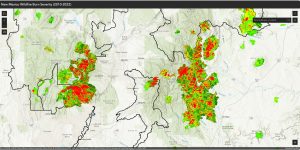

Reforestation Resources
Click here for more reforestation resources — from upcoming events to scientific articles and more.
New Mexico Reforestation Workshop
Check out this video from our May, 2024 Workshop in Sapello, in which forestry professionals discuss what to plant, how to plant and where to plant it. Other topics include how to work with contractors, how to prep planting sites, and how to order your own seedlings through the NM Forestry Division’s Conservation Seedling Program.
New Mexico is a leader in reforestation
New Mexico is primed to lead reforestation efforts across the Southwest because of the ability to access leading reforestation experts , based in New Mexico, who are supported by interagency vision and planning. In the 2020 Forest Action Plan, reforestation is one of ten strategies listed to address the management needs of our priority forests and watersheds. The strategy aims to “create conditions for planting the right tree in the right place for the 2100 climate and bring burned lands to a healthy function for people and the environment.”
Our Partners
Additional information can be found through the following partners.
New Mexico Reforestation Center
The mission of the New Mexico Reforestation Center (NMRC) will be to meet current and future reforestation needs in New Mexico through its comprehensive seed bank, nursery, and planting operations combined with research, education, and outreach activities.

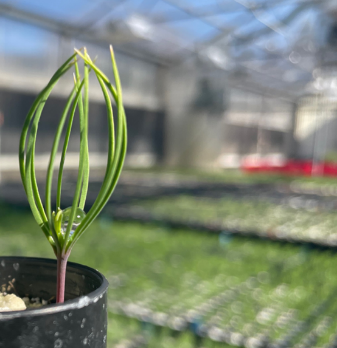
The NMRC is a collaborative effort between EMNRD Forestry Division, New Mexico Highlands University, New Mexico State University, and the University of New Mexico to address reforestation challenges from seed collection to post-planting. Currently, the NMRC grows trees out of the John T. Harrington Forestry Research Center in Mora, NM. The nursery at the research center takes great care in sourcing seed that is genetically appropriate for New Mexico. Genetic diversity and specificity will help trees survive and forests will be more resilient to pests and fire in our future climate. The research center nursery is capable of growing 300,000 trees per year.
In 2023, the New Mexico legislature included $8.5 million in the budget to fund the first phase of the NMRC. This and future funding will facilitate the building of a new greenhouse capable of growing 5 million seedlings per year. The NMRC will not only be able to grow more trees, but will address all aspects of the reforestation pipeline.
The Reforestation Pipeline
Reforestation in New Mexico and across the west will take more than growing and planting trees. Collecting and storing enough seed is the first part of the process, and we are behind! Cones used to be collected mostly to reforest lands after logging. People did not anticipate the mega fires we are now experiencing every year, and the millions of acres needing reforestation in the western United States.
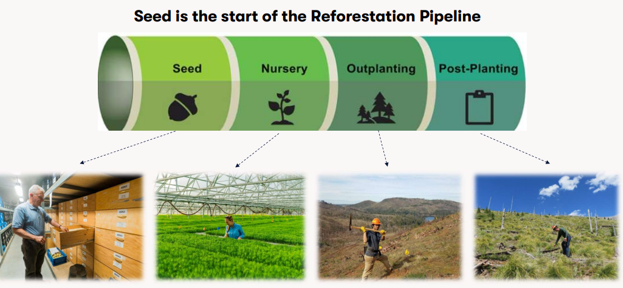
Efforts are currently underway to train more climbers for seed collection. Additionally, some of the best collectors in the country will be in New Mexico September of 2023 to collect a mast crop of cones. This is an important step in reaching the NMRC growing capacity of five million seedlings a year.
Learn more detail about the reforestation pipeline here:
- Frontiers | Challenges to the Reforestation Pipeline in the United States (frontiersin.org)
- The Reforestation Pipeline In The Western United States
The NMRC will work on each aspect of the pipeline to ensure that seedlings survive, and forests can regenerate.
Why Reforestation?
Facts
- Forests supply 50% to 75% of all water used by municipalities and agriculture in the state
Our forested watersheds are crucial for water quality and quantity. As the water travels from clouds high in the mountains down through the forest, many elements of the forest (trees, rocks, soil, plants) help filter the water and slow the flow. This cleaner water traveling at a slower pace benefits water sources (streams, rivers, lakes) and all the life, including us, that rely on that water.
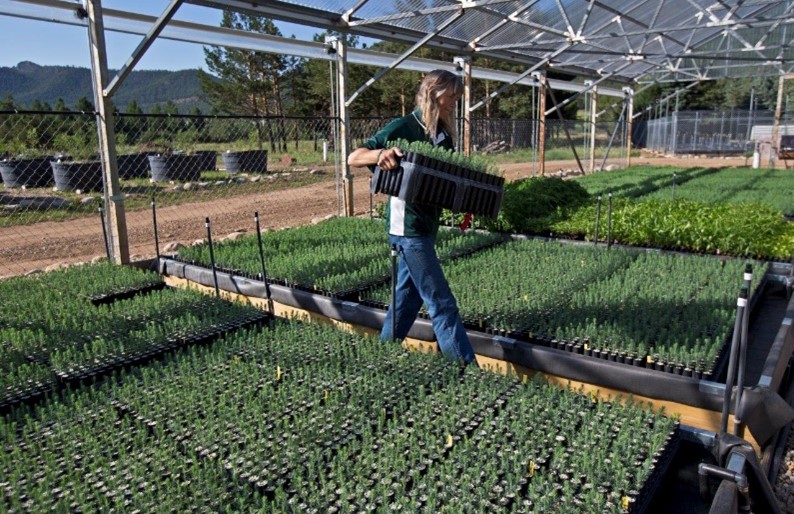
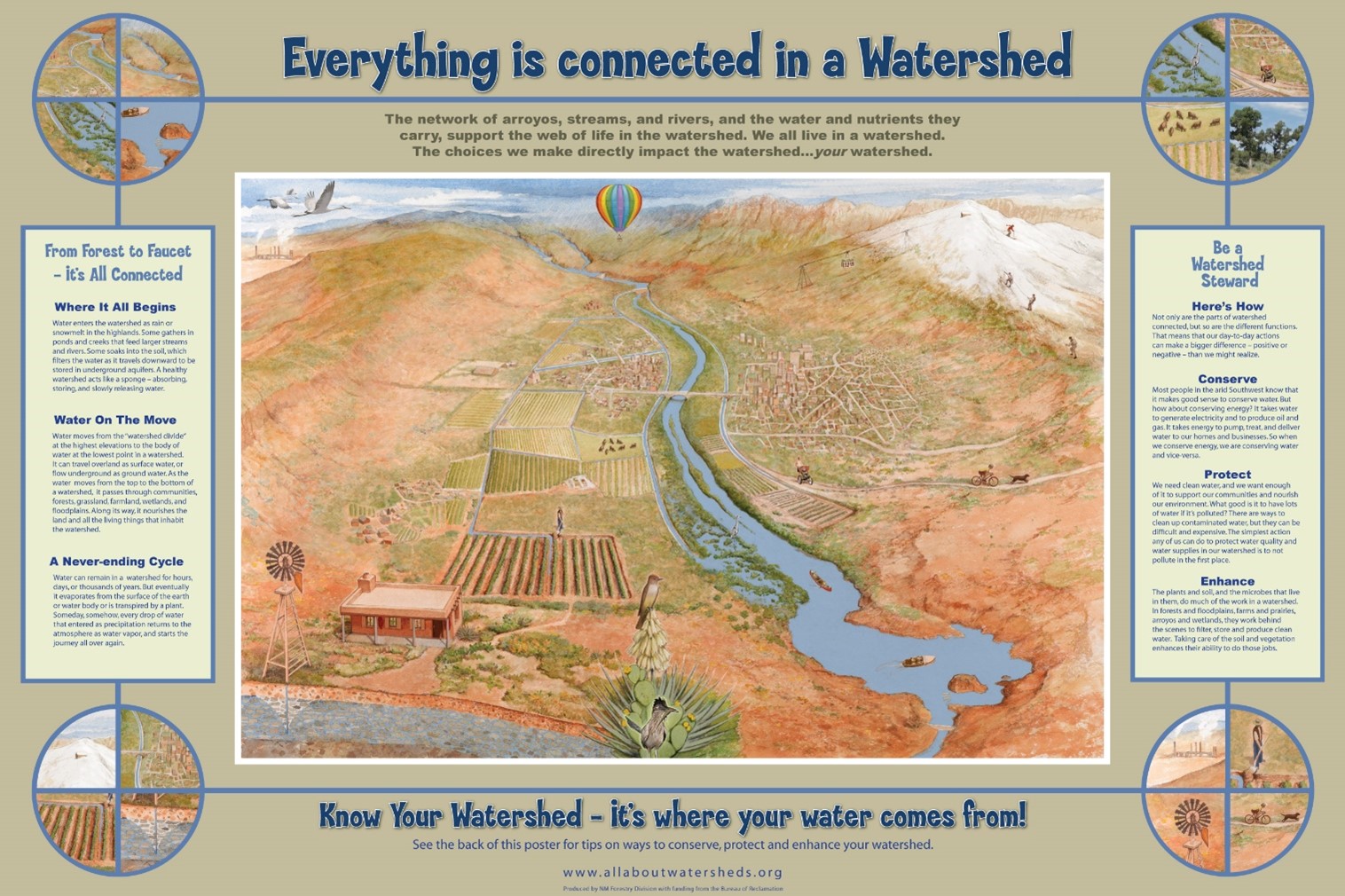
- Over the past 20 years, wildland fires in New Mexico have burned over 5.45 million acres
In these areas, the water runs off more easily and is not absorbed back into the system. Especially in the first decade after a fire, this run-off water is full of debris and sediment and not suitable for life.
- New Mexico currently needs to plant between 1 to 2.6 million acres, which would require 150 to 390 million seedlings
Not all burned acres can be reforested. The best science tells us that we need to plant in patches where conditions are good for seedling survival and seed dispersal. These patches will help the forest return to its more natural state – less homogeneity of tree age across stands. Patches of different aged stands among treeless patches will help the forest avoid future high severity, massive fires. The New Mexico Reforestation Center plans to utilize models developed by UNM to determine where the best places to plant seedlings are. These seedlings will be grown from genetically appropriate and diverse seed that will be better equipped for our future climate.
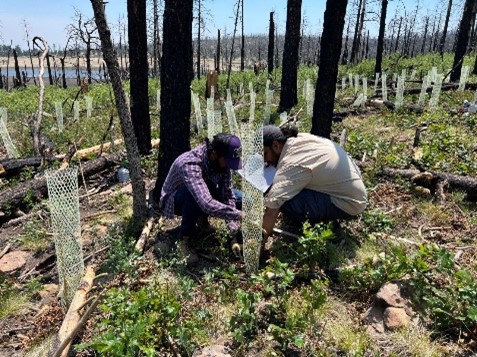
Contact:
Erin McElroy
Forest and Watershed Health Group Coordinator, EMNRD Forestry Division
(505) 490-7378
